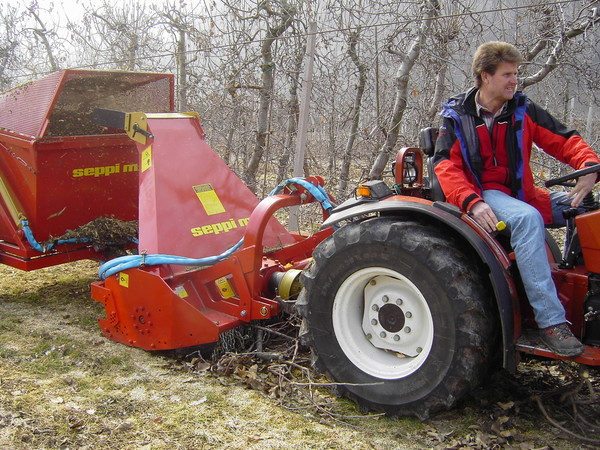
High-performance mechanization for valuing pruning residues
The agricultural waste handling, which has always been a burden for farms from an organizational and economic perspective, can now constitute a valuable resource if the residual material is used as an energy source. Mechanization makes it possible to use this resource conveniently. Still, technologies must be chosen according to the specific needs of each company. The choice of the most suitable site is, therefore, crucial
For many (perhaps too many) years pruning residues have been considered more a waste than a potentially valuable by-product, the handling of which involved an increase in production costs, and sometimes even several problems of a phytosanitary nature.
Partly thanks to the boost provided by policies aimed at encouraging the production of renewable energy, as well as the establishment of the principles of the circular economy, in the last two decades, pruning residues have instead increasingly been considered as an additional resource to the main product, which has led to growing attention to the supply chains to enhance this type of biomass. Besides, essential prerequisites for the technical-economic and environmental sustainability of waste collection are the cost minimization and the protection of biomass quality.
In this respect, the chopping on-site or the accumulation of vine shoots on the vineyard with consequent removal by combustion are the most frequently adopted solutions. However, free combustion in the open air is a practice almost wholly abandoned because of constraints and significant regulatory restrictions. At the same time, shredding is still very much practiced, especially in those areas where the orographic and territorial characteristics of the vineyards (slope, size, road system, etc.) are complicated. There is little demand for that type of woody biomass. More specifically, shredding is performed with equipment capable of working with material that can reach 4 cm in diameter, then with rotors equipped with smooth or toothed hammers (or bats), then with working organs different from the standard shredder, equipped with knives. However, accessories such as the spring-return or touch probe interline disc improve the work' completeness (and thus the quality).
The waste collection sites differ according to the methods of interception and subsequent shredding of the material. They can be divided in: grouped sites, where the biomass is lifted from the ground and simultaneously shredded; separate sites, where the biomass is first packed and then conveyed to the subsequent treatment sites.
Merged sites
Forage harvesters can be coupled to the tractor (usually semi-mounted) or self-propelled. The woodchips produced can be temporarily stored in particular machinery bags or tanks or directly loaded onto a trailer towed by the same tractor or by a second tractor in the adjacent row through a swivel gooseneck conveyor. Self-propelled picking mulching machines are undoubtedly more productive than those coupled to the tractor. Still, on the other hand, they have much higher investment costs. Therefore, their adoption is justified only for high surfaces, with plant layouts and orographic conditions suitable for the passage of vehicles of a certain size.
Separate sites
In case the pruning residues collection is carried out with separate sites, the collection is often carried out with balers intercepting the material in the inter-row and packing bales varying in shape and size, taken subsequently, and finally stored for natural drying.
In this sense, CAEB International of Sorisole (BG) is launching the Quickpower range, a series of round balers specifically designed and manufactured for collecting and pressing small cylindrical bales (60 cm high by 40 cm in diameter), with an average mass of about 25-30 kg each. As an option, an onboard accessory is available to store the ballets produced (from 4 to 8 depending on the model), in order to reduce the accessory time of the whole routine. CAEB International has also developed some boiler models for the direct combustion of small bales produced in the field.
The Lower Heating Power (LHP)
It is a way to express the energy potential of a material subject to combustion. It is obtained by measuring the energy developed by the complete combustion of a certain amount of combustible material, taking into account that the humidity contained during combustion does not release heat, but instead absorbs it in order to evaporate. Conversely, the Higher Heating Value (HHV) still indicates an energy potential, which, however, refers to the full production of energy derived from combustion. For practical and comparative purposes, it is more practical and realistic to consider LHP rather than HHV.








